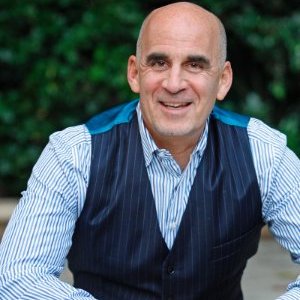Top Content Marketing Experts Reveal Their Views on Employee Advocacy (With Insights & Super Tips)
Expert Panel: Ted Rubin, Madalyn Sklar, and Sam Hurley
Employee Advocacy has always been present, even before social, as referral programs, employee discount schemes and offline word of mouth. With the advent of social, the concept was bound to extend to online employee advocacy with social mentions, brand news, and content sharing.
As social employee advocacy has been growing in popularity the world over, we decided to check in with the experts in the content marketing world on their stand with regard to its effectiveness.
In this series of interviews, we focus on these three questions:
Q1: How effective is employee advocacy in increasing outreach on social media?
Q2: What is the best way for a business to implement employee advocacy?
Q3: What are your top tips for running a successful employee advocacy program?
Read on to see what they said. But first, here’s an introduction to the experts who’ve weighed in with their views on the subject.

Ted Rubin is an extraordinary social marketing strategist, keynote speaker, and is the brand evangelist and CMO of Brand Innovators. He’s a strong believer in the power of relationships and was the first to start popularizing the term ROR or Return on Relationships. He’s also #2 on the list of top people mentioned most by digital marketers.
Madalyn Sklar is an amazing social media influencer, blogger, podcaster and business coach who is known for her expertise is Twitter marketing. She is the host of #TwitterSmarter, an awesome Twitter marketing based chat and Twitter Smarter podcast, a social media interview series featuring social media marketing rockstars.
is an amazing social media influencer, blogger, podcaster and business coach who is known for her expertise is Twitter marketing. She is the host of #TwitterSmarter, an awesome Twitter marketing based chat and Twitter Smarter podcast, a social media interview series featuring social media marketing rockstars.
Sam Hurley is a brilliant growth hacker and social media influencer who’s areas of expertise include Search Engine Optimization, Conversion Rate Optimization and Pay Per Click marketing. He’s the director at Optim-Eyez and has been ranked #2 global digital marketer. He’s also got a strong presence in social media marketing analytics.
is a brilliant growth hacker and social media influencer who’s areas of expertise include Search Engine Optimization, Conversion Rate Optimization and Pay Per Click marketing. He’s the director at Optim-Eyez and has been ranked #2 global digital marketer. He’s also got a strong presence in social media marketing analytics.
Q1: How effective is employee advocacy in increasing outreach on social media?
Ted:
Many marketers have heard me talk about employee advocacy before, and how important it is to Empower your Employees (who will then Power your Brand) and to encourage them to “be social” in today’s relationship age. The fact that relationships are the new currency is true whether you are looking for a job, planning an event or selling a product/service.
Do your employees know and love your company, its products, and services? They could be great brand ambassadors if they had the right tools. Most employees have their own personal social media accounts and are connected to hundreds and thousands of people. What if they could use their own social media presence to help promote the company brand? Think of the reach you could achieve if your employees were empowered to spread the word to all of their connections, and those they influence and engage with regularly.
In today’s hyper-connected world, brands simply must embrace new ways of engaging with customers online, and your employees can help if you’ll let them. If you’re not looking for ways to involve your employees, then you are missing a huge opportunity to generate more Return on Relationship.
Madalyn:
Employee advocacy can be extremely effective when properly paired with your marketing department’s social media efforts. Your marketing team typically focuses on selling the brand whereas your employees can provide valuable insight and authenticity to your brand and message. They become trusted voices of your company to the outside world. With the proper training, your employees can move mountains as brand ambassadors.
Sam:
Extremely!!! I can say from personal experience that employees who have influence, reach and a network of similarly powerful contacts can propel outreach campaigns to places otherwise inaccessible.
Before the days of having a large network and following on Twitter, I would attempt outreach to no avail. If I was successful, it was a result from many attempts.
The modern world looks at vanity metrics first, it’s just how we’ve been wired.
So, brands need to start embracing the shift in culture – some employees DO want to be superstars and this enthusiasm should never be dampened. Focus should not be entirely honed in on the boss or even the brand itself. That’s a single touch-point. Utilize your staff and generate multiple touch-points, numerous communication channels, masses of engagement and equaling reach. It’s a no-brainer. Your staff are your brand.
Q2: What is the best way for a business to implement employee advocacy?
Ted:
What’s holding many brands back in this regard is fear. Fear their employees will say something wrong. Fear of losing control of the conversation. Fear of opening a Pandora’s Box of criticism.
Yes, giving up control is scary—especially in the marketing of your company. But not leveraging the power of your employees in the social space is like nailing one of your shoes to the floor. Your competition will soon overtake you. Thankfully, there are companies pioneering the space, addressing fear, management, and workflow factors.
Empowering employees to be thought leaders is a great way to find success through an Employee Advocacy program. Real estate giant Pacific Union provides content to their agents, about many topics relevant to agent’s followers, so they can grow their personal brand online and remain top of mind for their current and future real estate customers.
Madalyn:
Start by creating social media guidelines so your company’s message can be communicated clearly and properly on the various platforms. Next, you need to offer in-depth social media training from professionals. You don’t want your newly appointed cheerleaders running out and posting videos on Snapchat when they don’t fully understand how to use it. Or participate in a Twitter chat before they understand proper etiquette and simple do’s and don’ts. It’s best to not rush into this so your team can get well acquainted with the various platforms and learn how to utilize them.
Sam:
As employee advocacy is based around your staff, what better way to begin than by asking them first?
Get the whole team together and encourage as many ideas as possible. This in itself is a huge motivator and will actually generate a buzz.
Once thoughts have been aired, draw a vote and mark the winning ideas on a big board for all to see.
Before the plan is ready to go, guidelines should be set to ensure some level of control. You don’t want to be too strict but you similarly wouldn’t want employees to go off on a tangent. Think: dealings with customers and potential leads. How do you want these situations to be approached?
Q3: What are your top tips for running a successful employee advocacy program?
Ted:
By using a good employee advocacy platform, you can transform your employees into a marketing army.
There are apps that provide the tools to allow you to empower your employees to generate word of mouth and amplify your message around your marketing programs and measures the effectiveness from the top down. Here’s how you can build a solid employee advocacy program:
1. Identify the employees and others in your audience who are your best advocates. By focusing on these individuals, you can amplify your reach by maximizing the relevance of your content to your audience.
2. Manage and curate a focused body of content that your people will want to share with their social networks.
3. Empowers your employees and other advocates by gamifying communication about your brand. By rewarding employee advocates, you can encourage desired behaviors and amplify your social reach, while recognizing employees that are making a difference.
4. Measures your results. Some employee advocacy apps use metrics that allow you to monitor the effectiveness of your outreach.
In today’s hyper-connected world, brands simply must embrace new ways of engaging with customers online, and your employees can help if you’ll let them. If you’re not looking for ways to involve your employees, then you are missing a huge opportunity to generate more Return on Relationship.
Save time managing your social media accounts
Are you still managing your social media accounts directly from Facebook/Twitter/LinkedIn? Make your life easier by managing all your social media in one place, schedule posts, repeat posts, curate content and more. Try DrumUp now, it's free, forever.
Employee advocacy helps you re-charge your marketing from the inside out. It is my hope that more companies develop more ways to help businesses empower their employees to become advocates and generate more #RonR.
Madalyn:
1. Start with your most motivated employees who are successful on at least one social media platform. Give them as much help and support they need to succeed. As your program becomes successful, others will be encouraged to join. Before long your company cheerleaders will multiply.
2. Create a positive workplace for your employees .Give them incentives for participating in your employee advocacy program. And once they have the proper training, don’t be afraid to let go of the company reins and let them shine. When given the opportunity to be part of something bigger than themselves, they will rock your social media.
Sam:
Regular meetings – to discuss successes, failures, and experimentation. Use this time wisely to explore, applaud and incentivize with rewards (monetary or sentimental). Whatever you do, don’t begin the campaign to only let it slip in a couple of months. Follow through or face demotivating your workforce.
Measurement – as sometimes, manual assessment isn’t feasible. If you have a large team, things can quickly snowball and become too difficult to accurately analyze. There’s an array of tools out there, some of them are particularly great.
There you have it. Excellent insights and tips straight from the experts. How do you intend to implement employee advocacy with your businesses?